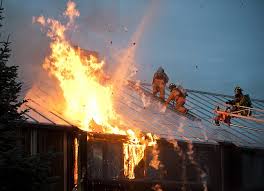Archive for May, 2014
Solar Panels Back on White House Roof

Four years later the White House has finished installing solar panels on the roof. In 2010 President Barack Obama said solar panels will be installed to provide some electricity and to heat the water. While it took a couple of years, in 2013 the project to install the solar panels finally began. On sunny days, the panels are expected to generate 6.3 kilowatts of solar power.
The first set of solar panels was placed on the roof when President Jimmy Carter was in office. The West Wing offices were equipped with a solar water heating system. Even though Ronald Reagan removed the panels when he took office, President George W. Bush had solar systems installed to power a maintenance building and provide heated water for the pool.
Unable to cover entire roof due to security reasons
Because of security the officials won’t tell how many panels were installed but we do know that the project required drilling down to the concrete on the White House roof then using epoxy glue and threading rods to install a gridded subassembly that the panels could be secured to. The administration won’t say who installed the solar panels or any roofers involved but did say they were American companies.
President Obama is hoping to encourage the private and public sectors to find ways to reduce reliance on foreign energy and cut down on emissions being blamed for global warming. The administration will also devote $2 billion to improve the energy efficiency of federal buildings by 2016.
The energy department has two new efficiency rules, one to cut the energy consumption of new electric motors and walk in freezers and two launch a training program at community colleges to help people enter the solar industry.
Fire Ratings and Your Roof

Some parts of the country live the threat of wild fires near their homes. With high winds of spring time it can be a real danger of embers igniting on your roof top. Roof systems must meet and hopefully exceed the minimum requirements for building codes and insurance purposes.
Certified testing laboratories will rate a roof system with Class “A” being the best, Class “B” or Class “C”. When looking for roofing materials, Class “A” fire rating is the highest rating with the best flame retardant materials. A thin roof system may have better fire performance since it has less fuel to feed a fire, although it may be a less durable roof.
Tile and Metal Roof Fire Concerns
Heavy tile roofing increases the risk of a cave in when there is an interior fire. Firefighters are trained not to go on a tile roof when there is a fire present. Metal roofs while they will not burn, they are heat inducers and the intense heat can ignite other parts of the house.
While thatching is no longer popular as a new building material, it is still used in some European countries. Thatcher’s say it is a misconception that thatching burns fast, they say it burns more like a closed book. Thatching is not as popular, not because of the fire possibility but because it can be quite expensive. New thatched roofs were forbidden in London in the 12th century due to the perceived fire risk.
Flammable wooden French Mansard roofs were common on most buildings and contributed to Boston’s great fire in 1872. The great fire of New York in 1835 was said to be caused by a burst gas pipe ignited by a coal stove. The fire got so hot it melted the new copper roofs and the liquid copper ran off the buildings.
If you are unsure of the best fire retardant roofing material for your climate, ask your local roofers for advice.






